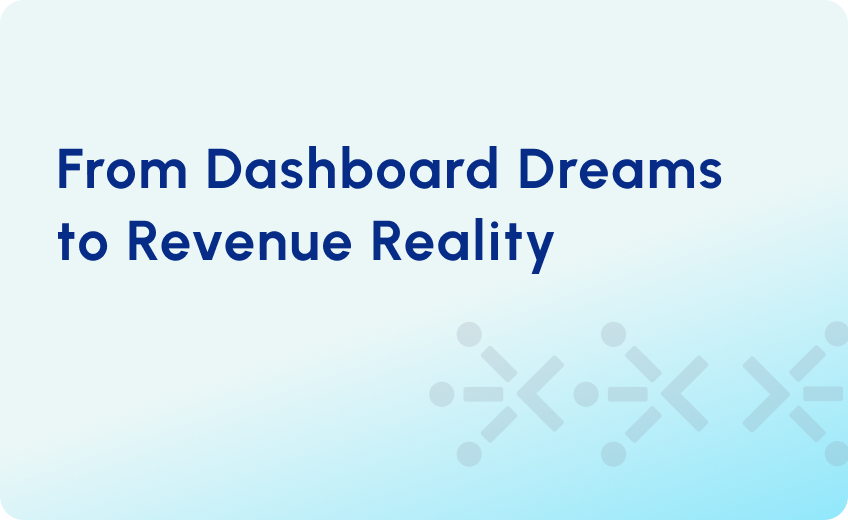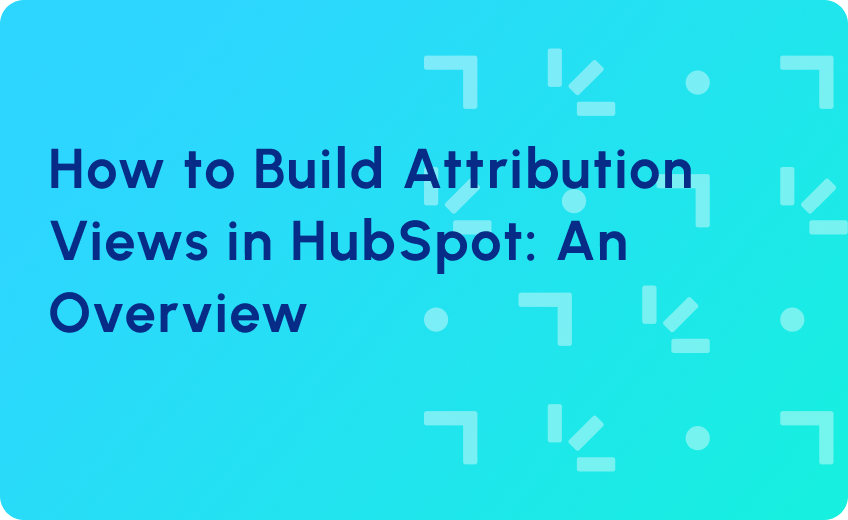
The Case for Opportunity Creation at the MQL Stage
Most organizations wait until a discovery call or post-demo qualification before creating an Opportunity record in Salesforce. But this doesn’t reflect how today’s buyers behave, and it certainly doesn’t support modern reporting, attribution, or buyer journey visibility.
A lot of times the buying journey often begins far earlier—with an intent signal. This could be a product-led signup, a firmographic match, or any sort of engagement from a target account. By the time a sales rep creates an Opportunity, much of that momentum and the insight that comes with it is already lost.
That’s why more RevOps leaders are making the shift: creating Opportunities at the MQL stage.
Creating Opportunities as soon as a lead reaches MQL status provides earlier visibility into buyer journeys, cleaner reporting, and a shared object for Sales and Marketing collaboration.
“You need to use the CRM in a way that makes sense for the sales people in your organization, and the Pipeline (Deals/Opportunities) is where they will focus the majority of their efforts.”
Why Waiting Until Discovery Is Too Late
The moment a high-intent lead engages with you, i.e. downloads a whitepaper, signs up for a trial, or attends a webinar, your revenue engine is already in motion.
However, in Salesforce, the Opportunity doesn’t officially “exist” until a rep logs a discovery call and confirms there’s a real buying interest.
Here’s what gets lost in the wait.
1. Delayed Pipeline Visibility: Leads can be highly engaged before that point. They may have attended webinars, downloaded key assets, or even interacted with multiple sellers. However, since no Opportunity exists yet, none of that engagement is visible in pipeline reports. To leadership, these warm leads don’t exist yet in pipeline projections, even if they’re days away from converting. As a result, pipeline coverage appears lower than it really is.
2. Untracked influence: Before an Opportunity is created, leads often engage with marketing campaigns, product experiences, or ABM programs. But because there’s no Opportunity object yet, none of that engagement is captured in influence or attribution reporting. This makes it harder to prove campaign impact, allocate the budget effectively, or understand what’s actually driving the pipeline.
3. Missing buying group data: In many early-stage deals, multiple stakeholders from the same account might be joining webinars, downloading content, or exploring the product. But without an active Opportunity to anchor those contacts, there’s no structured way to capture their involvement. By the time Sales creates the Opportunity, much of that early activity is disconnected, and key influencers may be overlooked entirely. This limits multi-threading, weakens strategic ABM execution, and slows momentum just when deals should be accelerating.
What Is “Opportunity at MQL” and Why It Changes Everything
The Opportunity at MQL model is a shift in when and how sales opportunities are created in your CRM. Instead of waiting until a discovery call or post-SQL handoff, this approach creates an Opportunity record as soon as a lead meets marketing qualification criteria.
The goal is to establish a single object view earlier in the funnel, giving Sales and Marketing a unified place to track progression, engagement, and influence—right from the first signs of buying intent.
This model is especially effective within a Contacts-First Salesforce architecture or a hybrid setup where MQL-stage leads can trigger Opportunity creation through automation. Whether it’s an ABM program that activates an entire account, a PLG signup from an ICP, or a webinar registration with strong fit signals, the moment that engagement qualifies, the Opportunity is opened.
The Benefits of Early Opportunity Creation
1. Unified Reporting Across Teams
When Sales and Marketing both work from the Opportunity object, there’s no need for stitched-together reports across Leads, Contacts, and Opps. Engagement, lifecycle progression, and attribution can all be tracked in one place.
2. Early Buying Committee Visibility
The Opportunity becomes a container for building the buying group from day one. As more contacts from the account engage, they can be associated with the active Opportunity through Opportunity Contact Roles, giving Sales immediate visibility into influencers, champions, and blockers—well before late-stage outreach.
Ready to Build Multi-Threaded Deals That Close Faster?
Download our whitepaper: A Guide to Buying Group Optimization in Salesforce and learn how to:
- Engage full buying groups from day one
- Automate Salesforce Contact Role assignment
- Align GTM teams with shared visibility
- Prove marketing impact with airtight attribution
3. Cleaner Data for Non-Linear Journeys
B2B journeys rarely move in a straight line. Accounts drop off, re-engage, and evolve. Creating Opportunities early supports a one-to-many model, where each Opportunity reflects a distinct buying motion. This structure preserves historical engagement, reduces data loss, and allows better attribution across multiple touchpoints.
How to Operationalize Opportunity at MQL
| Common Concerns / Challenges | Implementation Best Practices |
|---|---|
| “Won’t this inflate our pipeline?” | Use strict MQL criteria + entry conditions to keep pipeline clean. |
| “What if the deal doesn’t move forward?” | Treat early-stage Opps as signal containers, not just forecast tools. |
| “This will confuse sales reps.” | Train SDRs/AEs on new Opp stages, follow-up SLAs, and dashboards. |
| “How do we make sure it’s consistent?” | Use Salesforce Flow or LeanData to automate Opp creation at MQL. |
| “How will we track the buying group early?” | Roll out Opportunity Contact Role mapping alongside this model. |
Conclusion
Creating opportunities at the MQL stage gives teams faster feedback loops, better buying group engagement, and stronger pipeline foundations.
With unified reporting, buying group visibility, and data continuity, this model becomes the foundation for scalable, insight-driven growth.
At RevOps Global, we help teams implement this approach through:
- Signal-based MQL qualification frameworks
- Automated Opportunity creation flows in Salesforce
- Buying group orchestration using Opportunity Contact Roles
- Lifecycle reporting and attribution dashboards that actually work
Book a 1:1 strategy session with us to see how it works.




